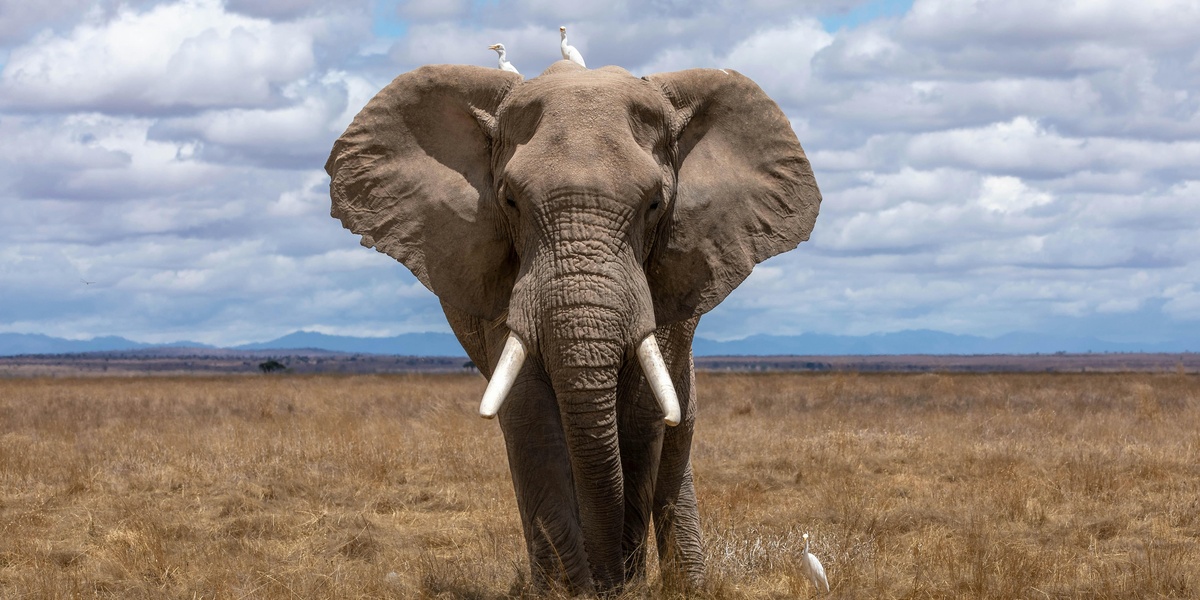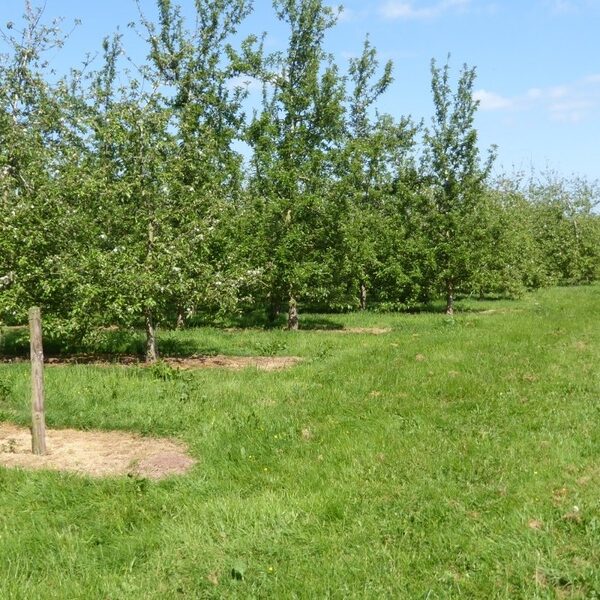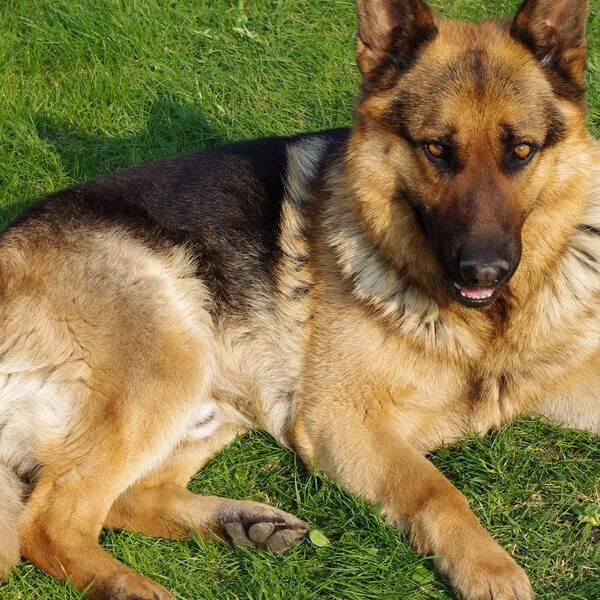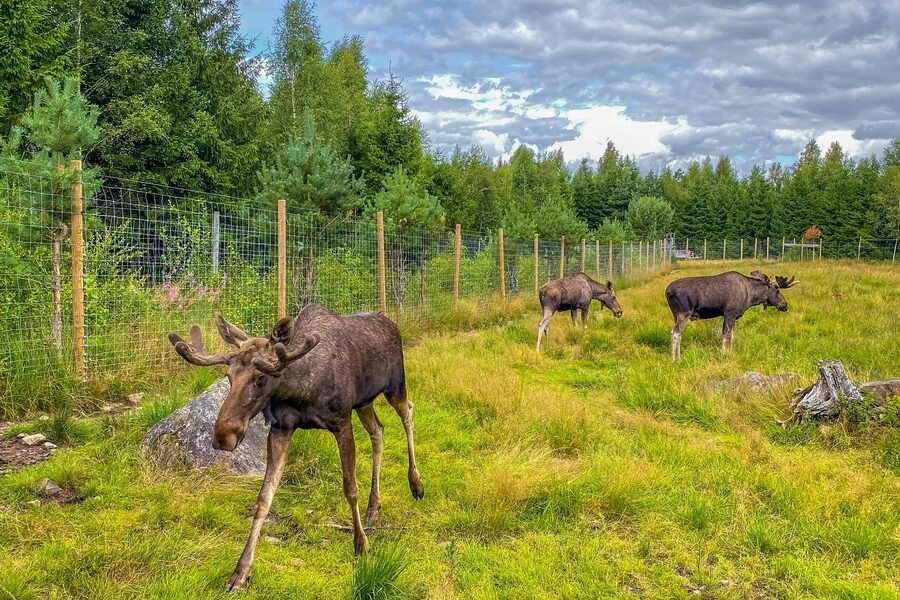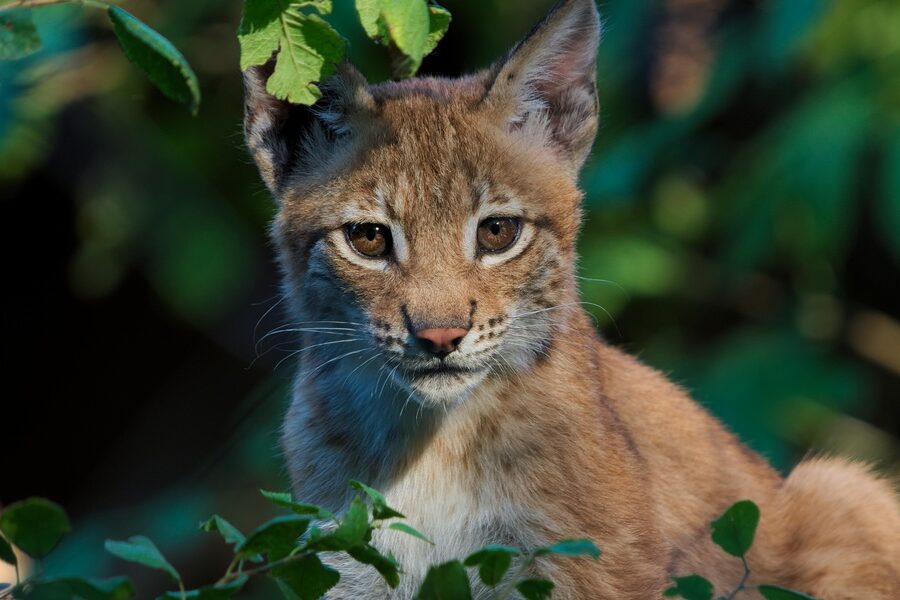The savanna is a patchwork of grasses, scattered trees and seasonal water that supports large herds and solitary grazers alike. Herbivores shape vegetation patterns, influence predator distributions and are central to how these landscapes function year to year.
There are 44 Savanna Herbivores, ranging from African buffalo to Wild water buffalo. Each entry is listed with Scientific name, Typical mass (kg), and Range (regions); you’ll find these details below.
What counts as a “savanna herbivore” on this list?
This list includes terrestrial mammal species commonly tied to savanna and open woodland ecosystems that feed primarily on plants—grazers and browsers of adult size that have established ranges in savanna regions. Aquatic feeders, strictly forest specialists, and tiny rodents are generally excluded.
How accurate are the Typical mass (kg) figures?
Typical mass values are mean or common adult weights compiled from field guides and studies; they reflect averages and can vary by sex, season and population. Use them as general guidance and consult species-specific sources for precise measurements.
Savanna Herbivores
| Name | Scientific name | Typical mass (kg) | Range (regions) |
|---|---|---|---|
| African elephant | Loxodonta africana | 3,500-6,000 | Sub-Saharan Africa; open tropical savannas |
| Giraffe | Giraffa camelopardalis | 800-1,200 | Sub-Saharan Africa; dry and mesic savannas |
| African buffalo | Syncerus caffer | 500-900 | Sub-Saharan Africa; wet and dry savannas |
| Hippopotamus | Hippopotamus amphibius | 1,300-1,800 | Sub-Saharan Africa; riverine savannas and floodplains |
| Plains zebra | Equus quagga | 220-380 | Eastern and southern Africa; open savannas |
| Grevy’s zebra | Equus grevyi | 300-450 | Horn of Africa; arid and semi-arid savannas |
| Blue wildebeest | Connochaetes taurinus | 150-250 | Eastern and southern Africa; seasonal savannas |
| Black wildebeest | Connochaetes gnou | 80-120 | Southern Africa; temperate and montane savannas |
| Common eland | Taurotragus oryx | 400-940 | Sub-Saharan Africa; mixed and dry savannas |
| Giant eland | Taurotragus derbianus | 400-1,000 | West and Central Africa; savanna woodlands and gallery forests |
| Greater kudu | Tragelaphus strepsiceros | 150-315 | Eastern and southern Africa; savanna woodlands and thickets |
| Impala | Aepyceros melampus | 40-76 | Sub-Saharan Africa; mixed savannas and woodlands |
| Springbok | Antidorcas marsupialis | 25-50 | Southern Africa; arid and semi-arid savannas |
| Gemsbok (Oryx) | Oryx gazella | 180-240 | Southern Africa; arid savannas and plains |
| Sable antelope | Hippotragus niger | 180-270 | Southern and eastern Africa; woodland-savanna mosaics |
| Roan antelope | Hippotragus equinus | 200-300 | Sub-Saharan Africa; open woodlands and savannas |
| Hartebeest | Alcelaphus buselaphus | 100-200 | Sub-Saharan Africa; open grassy savannas |
| Topi | Damaliscus lunatus | 100-150 | Sub-Saharan Africa; floodplain and grassland savannas |
| Thomson’s gazelle | Eudorcas thomsonii | 15-25 | East Africa; open short-grass savannas |
| Grant’s gazelle | Nanger granti | 35-60 | East Africa; dry and semi-arid savannas |
| Kirk’s dik-dik | Madoqua kirkii | 3-6 | Eastern and southern Africa; scrubby savannas and bushland |
| Warthog | Phacochoerus africanus | 50-150 | Sub-Saharan Africa; open savannas and grasslands |
| Common duiker | Sylvicapra grimmia | 15-25 | Sub-Saharan Africa; thicket and savanna mosaic |
| Cape hare | Lepus capensis | 2-5 | Africa and parts of Asia; open savannas and semi-arid grasslands |
| Rock hyrax | Procavia capensis | 4-5 | Sub-Saharan Africa; rocky outcrops in savannas |
| Waterbuck | Kobus ellipsiprymnus | 160-260 | Sub-Saharan Africa; riverine and wet savannas |
| Kob | Kobus kob | 100-150 | West and central Africa; floodplains and moist savannas |
| Bohor reedbuck | Redunca redunca | 35-80 | Sub-Saharan Africa; floodplain grasslands and marshy savannas |
| Greater cane rat | Thryonomys swinderianus | 3-6 | West and Central Africa; moist savannas and grasslands |
| Nilgai | Boselaphus tragocamelus | 100-300 | Indian subcontinent; dry deciduous and savanna woodlands |
| Blackbuck | Antilope cervicapra | 25-50 | Indian subcontinent; open grasslands and savannas |
| Chital (spotted deer) | Axis axis | 50-90 | Indian subcontinent; dry deciduous forests and savannas |
| Barasingha (swamp deer) | Rucervus duvaucelii | 120-200 | Indian subcontinent; grassland and swampy savannas |
| Wild water buffalo | Bubalus arnee | 600-900 | South and Southeast Asia; grasslands and marshy savannas |
| Red kangaroo | Osphranter rufus | 22-85 | Australia; arid and semi-arid savannas and grasslands |
| Eastern grey kangaroo | Macropus giganteus | 40-70 | Eastern Australia; woodland-savanna and grassy plains |
| Antilopine kangaroo | Osphranter antilopinus | 20-60 | Northern Australia; tropical savannas and grasslands |
| Agile wallaby | Notamacropus agilis | 9-22 | Northern Australia and New Guinea; grassy savannas and woodland edges |
| Capybara | Hydrochoerus hydrochaeris | 35-65 | South America; Llanos, Pantanal and savanna wetlands |
| Marsh deer | Blastocerus dichotomus | 80-150 | South America; seasonal wetlands and grassy savannas |
| Pampas deer | Ozotoceros bezoarticus | 20-40 | South American pampas and savanna grasslands |
| American bison | Bison bison | 450-900 | North America; temperate grasslands and oak savannas |
| Pronghorn | Antilocapra americana | 40-60 | Western North America; open grasslands and oak savannas |
| White-tailed deer | Odocoileus virginianus | 45-136 | North America; woodlands, oak savannas and edge habitats |
Images and Descriptions

African elephant
The African elephant is the largest land mammal, roaming African savannas in family herds, eating grasses, leaves and bark. Superb ecosystem engineers, they shape vegetation and water access, creating habitats used by many other savanna species.
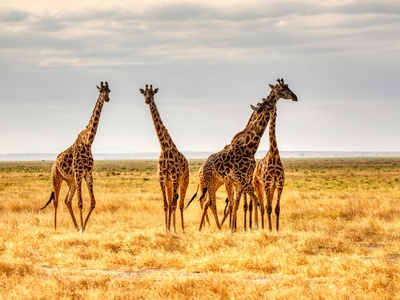
Giraffe
A tall browsing mammal found across African savannas, giraffes feed mainly on acacia leaves and shoots. Their long necks let them reach high foliage, and their spotting patterns help identify regional populations and individual animals.
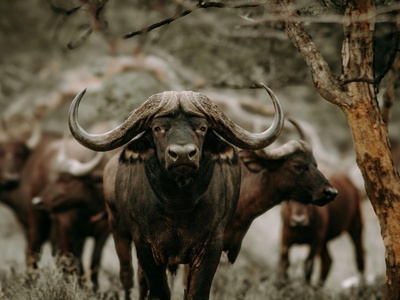
African buffalo
A large, herd-living grazer found near water in African savannas, buffaloes feed mostly on grasses. Highly social and formidable against predators, they influence grassland structure and are important for savanna nutrient cycling.
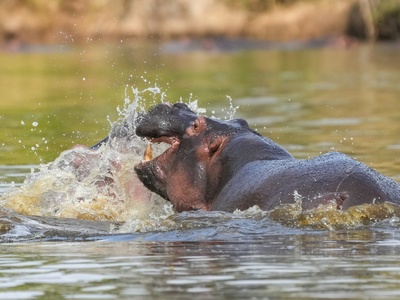
Hippopotamus
Hippos spend days in water and graze grass at night across savannas’ floodplains. Though amphibious, they are herbivores consuming large amounts of short grass and shaping riverine vegetation and nutrient flows.

Plains zebra
Plains zebras are social, migratory grazers on savanna grasslands, preferring short grasses. Their stripes may deter biting flies and help group cohesion; they are key grazers in seasonal migrations.
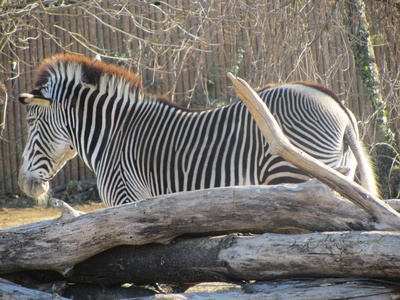
Grevy’s zebra
Grevy’s zebra lives in drier savanna and scrub, grazing tougher grasses and browsing sparse vegetation. More solitary and territorial than plains zebras, it is adapted to limited water and patchy forage.

Blue wildebeest
Blue wildebeest are migratory grazers of open savannas, eating grasses in vast herds. Famous for massive seasonal migrations, they drive predator dynamics and shape grassland regeneration across plains.
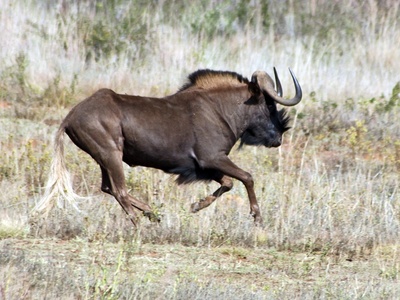
Black wildebeest
Black wildebeest inhabit southern grasslands and savannas, grazing grasses and forming tight herds. They evolved in open plains, display rapid running and complex social behavior, and were restored via conservation.
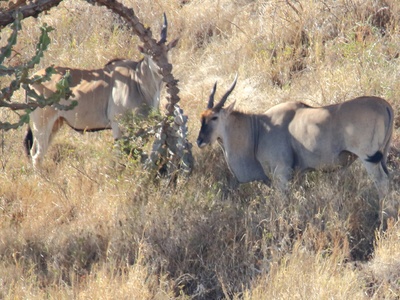
Common eland
The common eland is a huge, slow-moving antelope that browses and grazes across savannas. They eat grasses, leaves and fruits, and their size helps them access coarse vegetation other herbivores cannot.
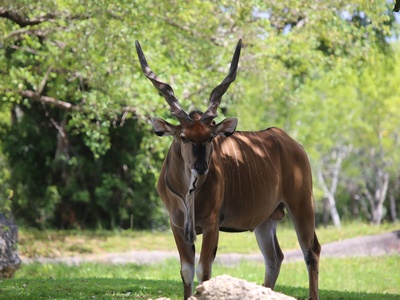
Giant eland
Giant eland is an enormous antelope of West African savanna woodlands, feeding on leaves, twigs and grasses. Less gregarious than other antelopes, it is vulnerable to hunting and habitat loss.
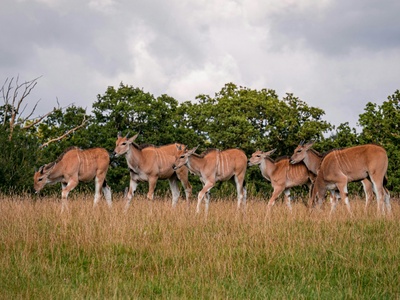
Greater kudu
Greater kudu browse shrubs and trees in savanna woodlands, using their spiral horns defensively. Recognizable by vertical stripes, they are adaptable browsers often found near cover and water.
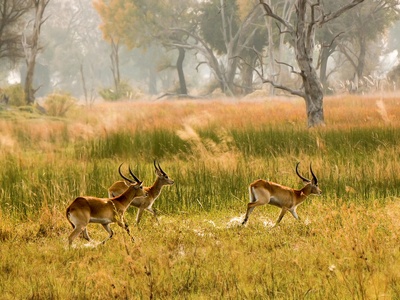
Impala
Impala are medium-sized antelopes that both graze and browse in savannas, switching diet with seasons. Agile leapers and socially complex, they are important prey for predators yet efficient at exploiting varied forage.
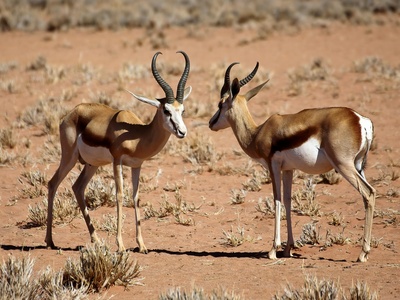
Springbok
Springbok are small, graceful antelopes of open savannas and dry plains, feeding mainly on grasses and succulents. They display explosive jumping (“pronking”) and are well adapted to scarce water and seasonal forage.

Gemsbok (Oryx)
Gemsbok are large antelope adapted to dry savannas, feeding on tough grasses, shrubs and succulents. They tolerate heat and water scarcity, and their long horns are used for defense and dominance displays.
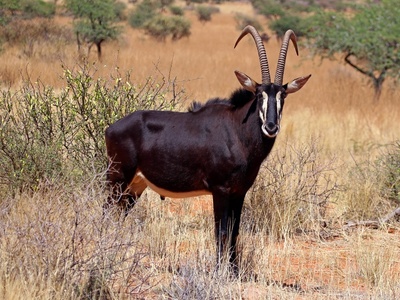
Sable antelope
Sable are striking black-and-white antelopes that graze and browse in savanna woodlands. Strong and territorial, they form herds and use curved horns in defense, influencing local grazing patterns.

Roan antelope
Roan antelope are large, grazing antelopes of African savannas, feeding mainly on grasses. They form harem or bachelor herds, are powerful defenders against predators, and prefer slightly more wooded savanna.
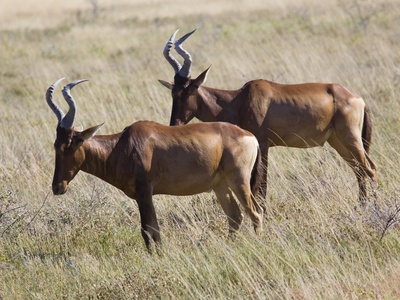
Hartebeest
Hartebeest are long-faced grazers adapted to open savannas, consuming a variety of grasses. Their high-crowned teeth and efficient digestive systems suit continuous grazing, and they often form nomadic herds.
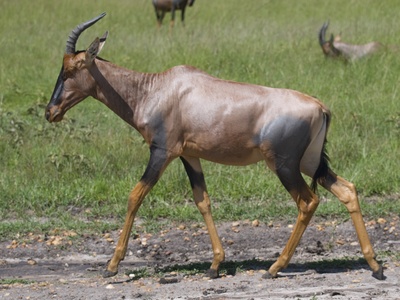
Topi
Topi are alert, fast antelopes grazing short grasses on savannas and floodplains. Territorial males defend patches of grass, and topi are important in predator–prey dynamics due to their daytime activity and herding.
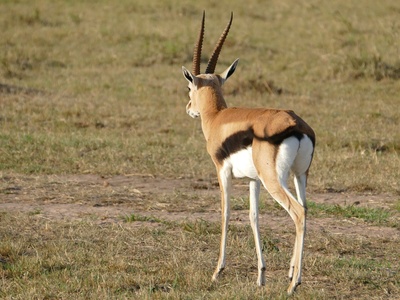
Thomson’s gazelle
Thomson’s gazelles are small, nimble grazers of East African savannas, eating short grasses and forbs. They form mixed herds, use speed to escape predators, and are a common sight in migration areas.
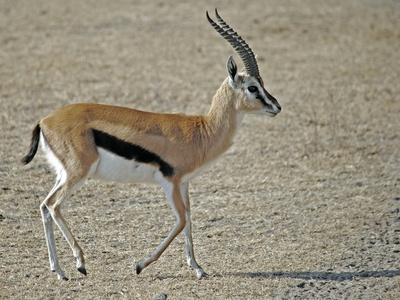
Grant’s gazelle
Grant’s gazelles browse and graze across dry savannas, eating grasses and shrubs when available. Adaptable to drought, they use patchy vegetation and can survive on browse during scarce grass seasons.

Kirk’s dik-dik
Kirk’s dik-dik is a tiny, territorial antelope feeding on leaves, shoots and grasses in scrubby savannas. They live in monogamous pairs, use scent marking, and are prey for many small predators.
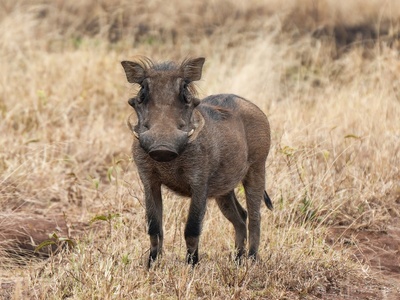
Warthog
Warthogs are pig-like grazers and roots-eaters that use burrows for shelter in savannas. They mainly feed on grasses and bulbs, can kneel to graze, and are surprisingly resilient and social.
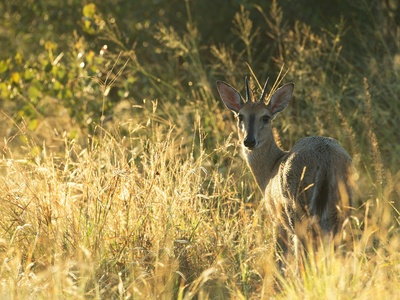
Common duiker
The common duiker is a small, adaptable browser of savanna thickets and woodland edges, eating leaves, fruits and shoots. Solitary and secretive, it helps control shrub growth and disperse seeds.
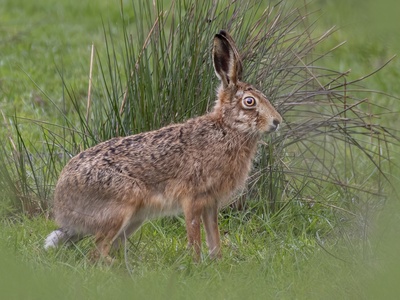
Cape hare
The Cape hare grazes and browses on grasses and herbs in open savannas, using speed to escape predators. Crepuscular and solitary, it is a common small herbivore across dry plains.
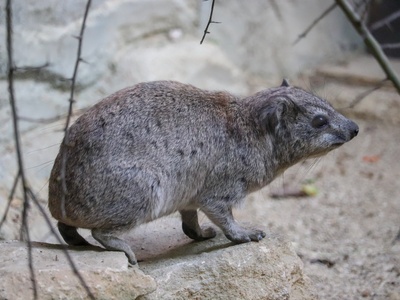
Rock hyrax
Rock hyraxes are small, social herbivores feeding on grasses and leaves near rocky outcrops within savannas. Closely related to elephants evolutionarily, they bask on rocks and form dense colonies.
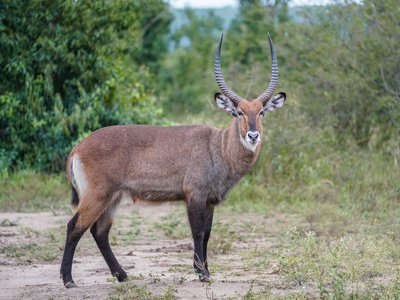
Waterbuck
Waterbuck are large antelopes that graze near water in savannas, favoring lush grasses. Their oily coat resists water, and they rely on wetlands and riverside vegetation for feeding and refuge.
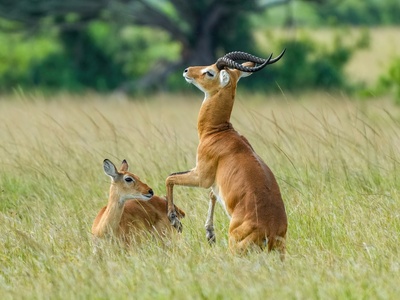
Kob
Kob are medium-sized grazing antelopes of floodplain savannas, forming large herds in wet seasons. Their population shifts with water and grass availability, making them central to wetland-savanna food webs.
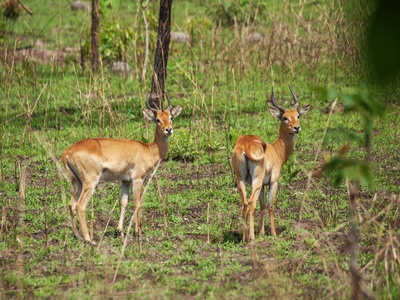
Bohor reedbuck
Bohor reedbuck are grazers of marshy savannas and floodplains, feeding on hydrophilic grasses and sedges. Shy and crepuscular, they frequent reed beds and grassy wetlands within savanna landscapes.
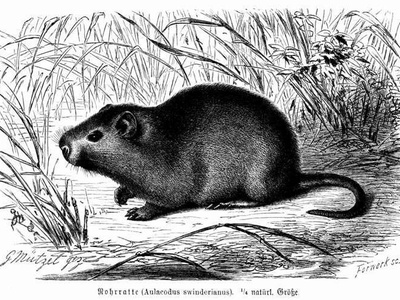
Greater cane rat
The greater cane rat is a large, mainly herbivorous rodent that feeds on grasses, crops and aquatic plants in savannas. Often considered a pest, it plays roles in seed dispersal and local food webs.
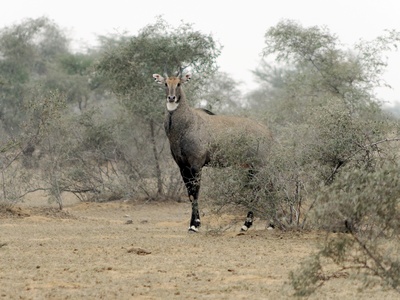
Nilgai
Nilgai are the largest Asian antelope, browsing and grazing across Indian savanna woodlands. Males are bulky with bluish coats; they adapt to seasonal forage changes and are common in agricultural frontiers.
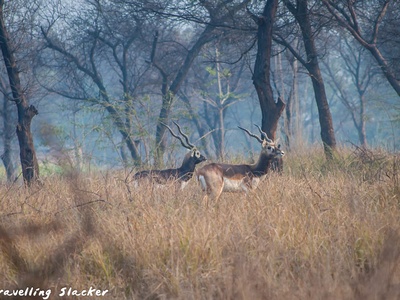
Blackbuck
Blackbuck are graceful, fast antelopes of South Asian grasslands, grazing on short grasses. Males have spiraled horns and display territorial leks; they prefer open, lightly wooded savannas and plains.
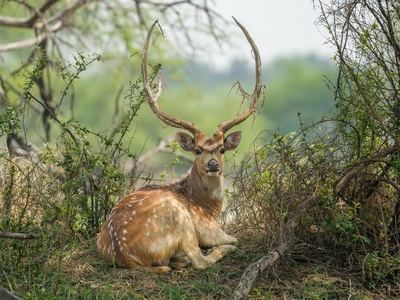
Chital (spotted deer)
Chital are medium deer that browse and graze in Indian savannas and woodlands, feeding on grasses, fruits and leaves. They form herds and are key prey for large carnivores in mosaic savanna habitats.
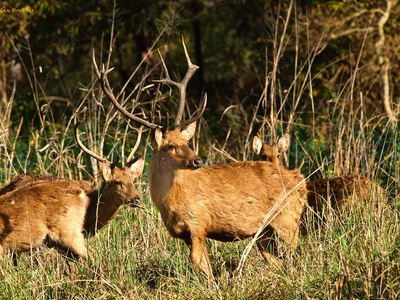
Barasingha (swamp deer)
Barasingha are deer of flooded grasslands and savanna meadows, eating grasses and sedges. Adapted to marshy savannas, they have splayed antlers and depend on seasonal wetlands for survival.
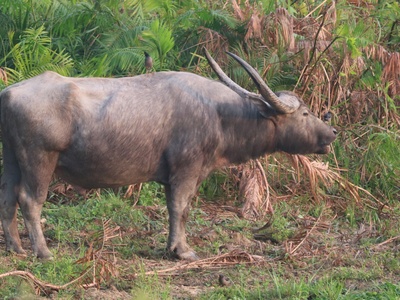
Wild water buffalo
Wild water buffalo graze wet grasslands and riverine savannas, consuming coarse grasses and aquatic plants. Heavily dependent on water, they form herds and are threatened by hybridization with domestic buffalo.

Red kangaroo
Red kangaroos are the largest marsupials, grazing grasses across Australian savannas. Males are large and muscular; they move by hopping, conserve water well, and influence grassland composition by selective grazing.
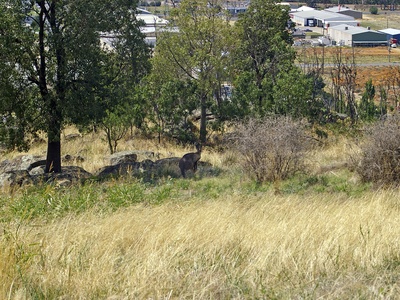
Eastern grey kangaroo
Eastern grey kangaroos graze grasses and shrubs in more mesic savannas and woodlands. Socially gregarious and crepuscular, they form mobs that modulate vegetation and are common across varied open habitats.

Antilopine kangaroo
Antilopine kangaroos inhabit northern tropical savannas, feeding on grasses and forbs. They form smaller mobs than red kangaroos and are adapted to seasonal wet–dry cycles of Australia’s savannas.

Agile wallaby
Agile wallabies are medium-sized macropods grazing grasses and herbs in tropical savannas. Solitary or in small groups, they use shaded edges and respond rapidly to seasonal grass growth.

Capybara
The capybara is the world’s largest rodent, grazing aquatic grasses and terrestrial forage in South American savannas and wetlands. Highly social and semi-aquatic, they shape wetland vegetation and attract many predators.

Marsh deer
Marsh deer browse and graze floodplain grasses and aquatic plants in South American savanna wetlands. Adapted to marshy habitats, they have long legs for wading and depend on seasonal water regimes.

Pampas deer
Pampas deer are small grazers of South American grasslands and savanna-like habitats, feeding on grasses and herbs. Skittish and crepuscular, they persist in fragmented grasslands and are indicators of prairie health.
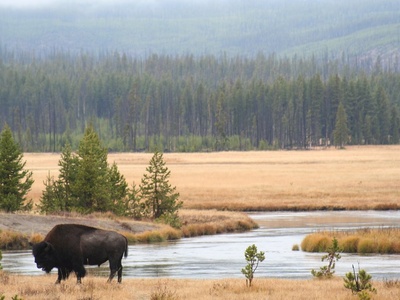
American bison
American bison are massive grazers that shaped North American plains and oak savannas through wallowing and heavy grazing. They consume grasses and sedges, influence plant communities, and historically formed vast migratory herds.
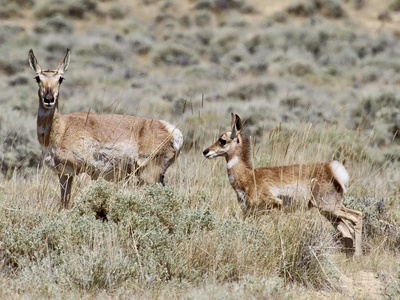
Pronghorn
Pronghorn are swift North American herbivores grazing grasses and forbs on plains and savanna edges. Famous for speed, they evolved to outrun cursorial predators and migrate seasonally following forage availability.
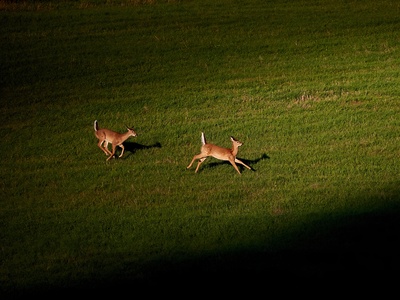
White-tailed deer
White-tailed deer browse shrubs, leaves and grasses across oak savannas and woodland edges. Highly adaptable, they influence understory structure, seedling survival and are a common large herbivore in human-modified savannas.
